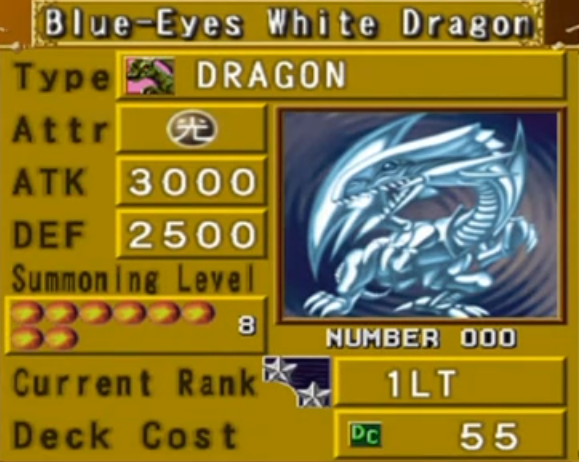
Once the knowledge has been acquired, it's only a matter of collecting a forceful deck of powerful strikers and spells before victory is yours. The most difficult aspect of Yu-Gi-Oh is memorizing the rule set and victory conditions as the challenge of the game itself isn't too hard at all (even when selecting the weakened deck of the Serpentine Princess, the player's only true enemy is understanding how everything works).

Whatever you do, try and avoid the draw - it requires you to start over and can sneak up on you more often than not. Additionally, battle can end in four different ways: Reduce the opponent's Leader Points to zero (LP) populate all eight of the opponent's summon squares (or less where applicable) Have more LP than the opponent after all 99 turns have expired or Summon the ultra-rare beast "Exodia the Forbidden One" for instant an victory. Each player can summon up to five monsters on the map simultaneously, with powers and abilities determined by card type, location, posturing, offensive and defensive point values, square terrain, and an experience-based rank system that determines its power. Combat is entirely turn-based with a consistent 7x7 grid map serving as the battleground. Even so, it's a good idea for everyone check it out at least once, as the rules in the videogame have been altered from the typical set to better fit its new skin. As an added bonus, veteran players can simply press start and skip the tutorial altogether and move straight into the action. To its credit, the game's tutorial (which clocks in well over twenty minutes long) does a terrific job of explaining all the different laws, premises, and other such things for newbies who haven't quite figured it out. Unless you play the card game with your friends in real life, however, understanding those rules can set you back a couple of hours while exploring them. In the most basic of terms, its structure is a modified "Rock, Paper, Scissors", with the appropriate categories built for the Yu-Gi-Oh rule set. Gameplay Duelist of the Roses is one of those types of things that takes forever to explain but not long to get the hang of. Veterans of the physical game, pre-teen children, and fans of the television show, on the other hand, will probably get a big kick out of it. Despite the ability to choose which house you defend and a hefty amount of magical spells and fantastical beasts, Yu-Gi-Oh's gameplay never quite reaches the same level of quality that Nintendo's yellow rat does. Not exactly how it happened in the formation of Tudor, but then again, Richard III isn't around to complain about it is he? Chances are that if Richard III were still alive (instead of becoming the ancient dog food he eventually was), he'd definitely find plenty of things to grumble about. Instead of the guns and bayonets used in the Battle of Bosworth Hill, however, this narration is played out with mystical card battles and gigantic summoned monsters.

Retelling the infamous War of the Roses conflict of 1485 between the English houses of Lancaster and York, Duelist of the Roses is admirably based in factual history.

And we have to admit the game's premise is definitely surprising. Already a hit in Japan for well over a year before finally slinking its way onto American shores, Konami's Yu-Gi-Oh! Duelist of the Roses just happens to be the title matching up with the aforementioned heavyweights. With games like Pokemon and Magic: the Gathering enthralling audiences on Nintendos, PC's, and local neighborhood streets, it was only a matter of time before the PlayStation 2's audience received a card battle of their own.


 0 kommentar(er)
0 kommentar(er)
